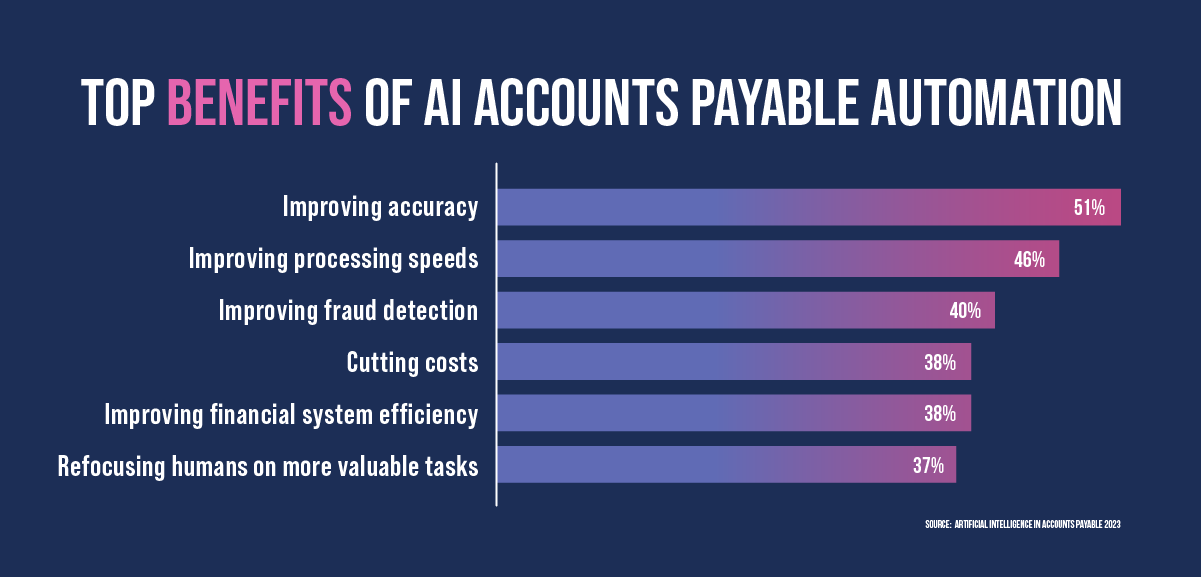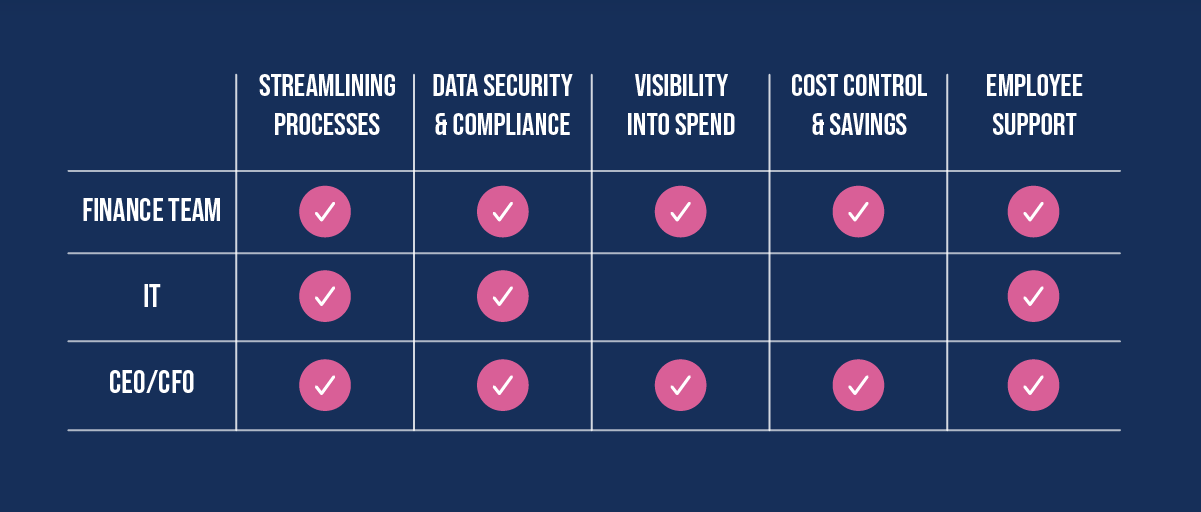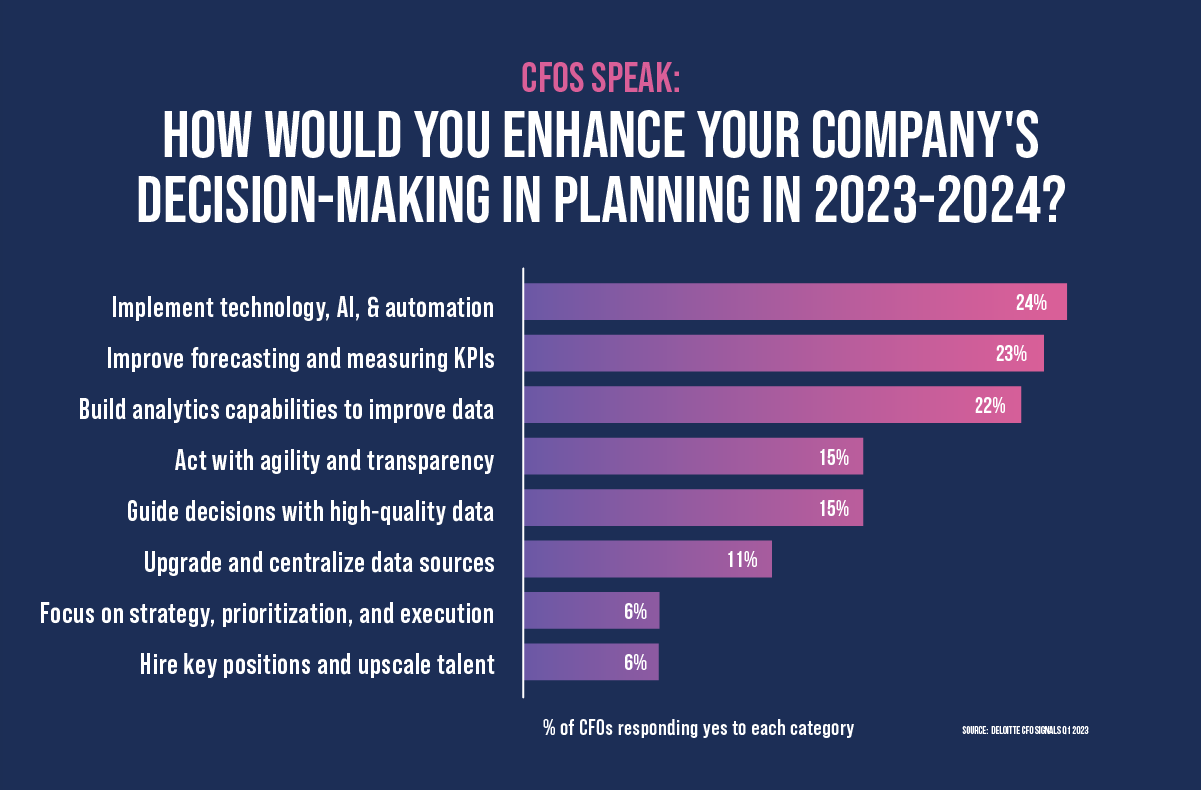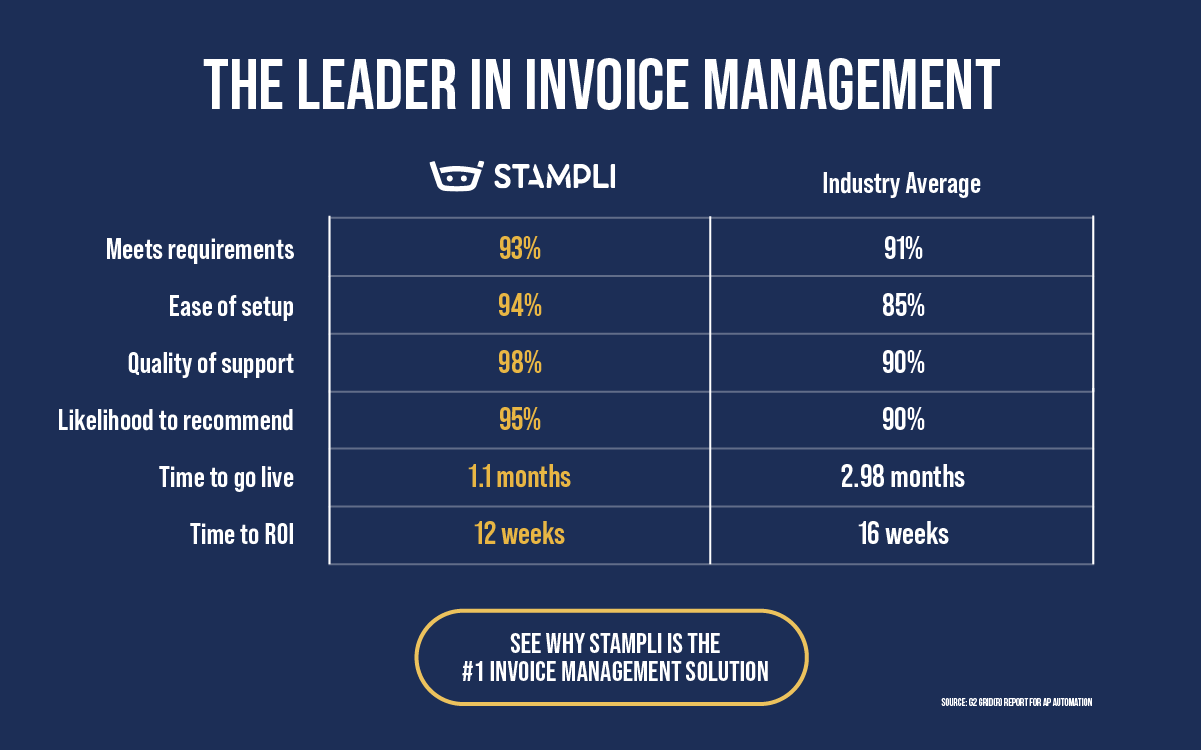How to get buy-in for your AP automation business case

You know the benefits of accounts payable automation and would like to implement it for your business. That means you have to sell the business case to senior leaders. But how do get your CFO/CAO, VP of Finance/Accounting, Controller and IT department on board?
Investing in the right AP automation solution can be evolutionary for your business. Case studies prove that AP automation can save money, boost processing efficiency, and improve working capital management. It also provides accurate and actionable real-time data and business insights that turn accounts payable into a driver for business strategy.
However, your company’s leadership may not be aware of these benefits. It’s up to you to earn their support by convincing them of the value of AP automation for your business.
In your role, you need to be ready to lead change and confidently back up your rationale for digital transformation with real data. In this article, we’ll show you how to build a solid AP automation business case.
Let’s dive in.
Why do you need an AP automation business case?
In Deloitte’s Q4 2023 CFO Signals report, 80% of CFOs said they expect their companies to embed automation technology into their operations in 2024, and 76% said they expect digital transformation to play a greater role in achieving their company’s strategy.
In today’s highly competitive marketplace, business leaders are focusing on streamlining and optimizing finance functions as much as possible to keep a competitive edge. For most businesses, this means investing in technology. As a result, business leaders play a greater role in assessing and purchasing financial automation solutions.
To win support for adopting an AP automation solution, AP and finance leaders must demonstrate the following:
- How AP automation will solve the company’s invoice processing problems.
- The cost/benefits and ROI for AP automation.
- Direct and indirect benefits of AP automation to the entire business.
- Automating AP will not require major changes to existing accounts payable processes, ERPs, and other systems.
Building a data-backed business case that addresses these points, speaks to business leaders’ concerns, and shows clear value to the business significantly increases the chance of convincing business leaders to support investing in AP automation.

Building your business case
The business case for AP automation consists of five sections:
- The problem: The problems or challenges that need to be addressed and the urgency for addressing them. For example, reliance on manual invoice processing may be causing your company to fall behind on supplier payments. As a result, the company is losing money on late payment fees and struggling to manage cash flow. Also, one of our main suppliers is threatening to stop doing business with us if we continue to miss payments.
- Current situation: The root cause(s) of the problem and potential issues. For example, your company relies on manual data entry because “you’ve always done it that way.” However, as your business has grown, so has the number of invoices it receives, and the AP team is overwhelmed. Adding staff will move the bottleneck to somewhere else in the AP process.
- Potential solutions: High-level descriptions of each option to solve the problem, along with the costs and benefits. For example, to resolve the invoice processing backlog, you could present AP automation and document management automation as two separate solutions.
- ROI analysis: Detailed rationale for choosing each solution. This section includes the costs and benefits of each solution, including return on investment, forecasts, and assumptions. For example, the rationale for choosing AP automation may include potential cost savings, percentage improvements in processing time, and reduced invoice error rates.
- Executive Summary: A concise summary of the issues, why they need to be addressed, and how you propose addressing them. Write the executive summary after you’ve built the business case to ensure you include all the relevant information.
Your business case needs to sell a vision to business leaders and stakeholders. To be effective, it must be accurate, well-researched, relevant to your company’s needs, and aligned with its business strategy. Follow these three steps to create a compelling business for AP automation.
Step 1: Define your objectives
First, identify what you plan to accomplish with AP automation. This can include deciding what manual tasks you want to automate, what type of automation solution you want to use, if you want to integrate the solution with your ERP, and what outcomes you want to see.
For example, do you want to automate invoice scanning, GL coding, and data entry? Or do you want to unify your payment methods on a single payment automation platform?
In addition, list the benefits that you expect from AP automation. For instance, here are some common benefits of fully automating accounts payable:
- Get visibility into your company’s entire spend.
- Free up employees’ time to focus on higher-value tasks.
- Eliminate error-prone and time-consuming manual paperwork and invoice data entry.
- Enforce internal controls across the organization.
- Reduce invoice processing time and maximize early payment discounts.
- Integrate with ERPs and business systems to share data in real-time.
- Improve working capital management for healthier cash flow.
Step 2: Support your business case with relevant data
Business leaders and stakeholders need to see measurable data to justify investing in or supporting implementing AP automation. Clearly present the current state of your AP processes by providing KPIs like invoice lifecycle, Days Payable Outstanding (DPO), or aging reports. Then, calculate ROI for AP automation by estimating direct and indirect cost savings, the impact of efficiency gains, and the costs of implementing the AP solution. Doing this research helps reinforce the value of your business case and shows business leaders you’re invested in your company’s performance.
Step 3: Consult with business leaders and stakeholders
To succeed, your business case needs support from your executive team and stakeholders. Executive support is crucial to obtaining funding and resources for your project, but you also need buy-in from departments affected by AP automation. This includes other finance teams and your IT department, but it can also include procurement, receiving, and product development departments depending on your organization. For example, if you’re considering a solution that offers automated three-way matching, you may need to engage the procurement and receiving departments to get their buy-in.
Helping others see the value in AP automation
Automating accounts payable benefits your entire business, but differing priorities can make it difficult to get buy-in. Change is hard, and convincing stakeholders to change existing processes can be tough. Here’s how to get people on board.
Find your allies
The best way to get buy-in for your AP automation business plan is to build support from the ground up. In a nutshell:
- AP staff need to process invoices, handle discrepancies, answer questions, and reconcile budgets.
- Managers have to review and approve invoices for payment.
- The IT department needs to develop and maintain business systems.
- Executives need the big picture so they can lead the business.
The sooner you engage these stakeholders in your business case for AP automation and get their input, the more likely you will get their buy-in.

Common objections to AP automation
As you engage stakeholders to gain support for your business case, they will most likely express objections to the project. In Stampli’s 2021 survey “The How, The Why & The ROI of AP Automation,” we asked business leaders why they invested (or chose not to invest) in AP automation. Of companies who chose not to invest in AP automation, 44% said it was because their current processes work well, 28% said lack of budget, and 21% said their accounts payable process was too complex to automate.
As we explore how to engage each group of stakeholders, we’ll offer some responses you can use to overcome these objections.
Getting buy-in from CEO and CFO
Your CEO and CFO may not be directly involved in AP workflows, but they can be very influential in supporting your business case.
Benefits of AP automation
AP automation can give CEOs and CFOs real-time visibility into key financial metrics, improving their ability to manage working capital and cash flow. Automation can also reduce invoice errors and fraud, reducing the chance that one of your executives will inadvertently approve payment on an erroneous or fraudulent invoice.

Upper management concerns
The CEO and CFO care about:
- Support for strategic decisions
- Scalable business growth
- Controlling company spending
- Ensuring regulatory compliance
- Data security
- ROI on purchases
When engaging with senior management, address their concerns by showing how AP automation:
- Provides real-time visibility into data and KPIs through AP reports and dashboards.
- Enforces internal controls across the organization and provides a complete AP audit trail.
- Implements quickly so the business can start saving money right away.
Common CEO/CFO objections
“We don’t have the budget.”
“How much does the average company save by automating AP?”
Talking points:
- AP automation saves money by improving employee productivity and eliminating out-of-policy expenditures.
- AP automation solutions can be implemented in days with no changes to current processes, and monthly costs are low.
- After implementing Stampli, Wenspoke Companies saw a 75% reduction in invoice processing time and a 73% faster monthly close for credit cards.
“Our current solution works. Why should we change?”
Talking points:
- Explain how long it takes to process a single paper invoice from receipt to payment, multiply that time by the annual number of invoices, and then compare it to the average time to process the same invoices automatically.
Getting buy-in from controllers and finance teams
The controller and AP team are directly involved in AP processing and financial reporting and are familiar with the issues. They know first-hand the frustrations of an inefficient process. You’ll gain their buy-in by helping them understand how AP automation will eliminate tedious manual processes and free them for higher-value work.
Benefits of AP automation to finance teams
- Increased staff productivity and invoice processing accuracy.
- Faster and more accurate reporting for the CFO.
- Less time chasing down approvals and answering questions.
- Reduced errors and fraud through two and three-way invoice matching.
Finance team concerns
Finance teams care about:
- Getting a complete view of expenditures
- Creating and managing spend policies
- Containing invoice processing costs
- Integration of the AP solution with ERP and other tools
- Interruption of service and user adoption
- Reducing time to payment
- Locating invoices in the workflow
- Automation taking their jobs
When engaging with the finance team, address their concerns by showing how AP automation:
- Eliminates slow and error-prone processes to ensure invoice accuracy and timely payments.
- Integrates with ERPs and accounting software to ensure seamless workflows and data integrity.
- Frees AP teams to focus on more interesting, higher-value tasks.
Common finance team objections
“Does the AP automation system connect to my accounting system so I don’t have to go through double the effort?“
“Will the system work with existing approval processes?”
Talking points:
- AP automation solutions like Stampli integrate with ERPs and accounting software to provide native functionality and seamless data sharing.
- You can implement Stampli without changing existing AP processes, including approval processes.
“Our AP processes are too complex to automate.”
Talking points:
- Stampli’s AI-powered solution helped Bulldog Hiway Express overcome paper shuffling, lost invoices, and missed payments by learning, automating, and optimizing their complex manual AP processes.
Getting buy-in from CIO or IT teams
Your IT department can significantly impact the implementation of an AP automation solution, and in many companies, IT can have the final say on new software. Getting their buy-in is crucial for a smooth transition to an AP automation system.
Benefits of AP automation
Cloud-based AP automation solutions provide greater flexibility, security, and functionality without investing in IT hardware. Solutions that feature pre-built integrations with ERPs, finance and accounting software, and other business systems reduce the IT work needed during implementation.
CIO and IT team concerns
CIO/IT leaders care about:
- Supporting new software
- Having to integrate new software with existing systems
- Implementation time
- Data security
- Compliance with data privacy regulations
- Ease of use for end-users
When engaging with CIOs and IT teams, address their concerns by showing how AP automation:
- Integrates with existing systems so IT doesn’t have to build new integrations.
- Uses cloud-based technology for easier updates and data integration.
- Provides security and performance and meets compliance requirements.
- Offers user training, resources, and support.
Common CIO and IT team objections
“We don’t have the resources to switch to automation.”
Talking points:
- You don’t need to buy software or hardware for cloud-based AP automation solutions, which means you can be up and running quickly. AP automation software like Stampli is designed to be intuitive and easy to use, so getting staff trained will be easy.
“It’s not a good time to change our process.”
Talking points:
- It’s rarely the perfect time to make a change. Cloud-based AP automation is inexpensive and easy to deploy, so now is the right time to implement the solution. Becker Studios implemented Stampli on top of QuickBooks in three days and realized 4X ROI immediately by avoiding additional AP hiring.
Speaking the right language
When engaging with key stakeholders, it’s important to present your business case in the language they’ll understand. For example, senior executives are more concerned about strategic issues, such as cost savings or ROI, than tactical issues, such as workflows. Speaking the same language as your audience will be key to getting their buy-in and approval for your project.
Transform Accounts Payable with Stampli
Stampli is the leading AP automation solution and the only one designed for Accounts Payable teams. It’s recognized by AP teams for ease of use, relationships, implementation, and getting results. Stampli is ideal for companies who want to save money and lead innovation in Accounts Payable.

The industry leader in AP Automation
You’ll immediately see the impact of AP automation on your bottom line. Stampli offers a no-code implementation that takes weeks, not months, and seamlessly integrates with major ERP systems and accounting platforms – most customers see ROI within 12 weeks.
Stampli makes AP simpler and more powerful thanks to Billy the Bot — the only AP AI assistant that adapts to your existing processes, optimizes AP workflows, and provides powerful insights.
Contact Stampli today to arrange a free demo.